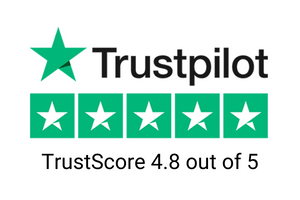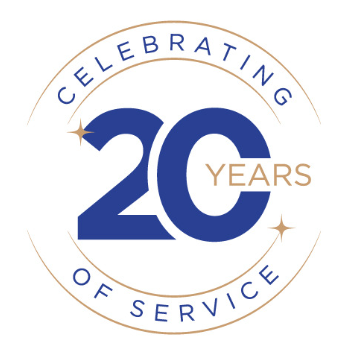Last Updated: March 25, 2024
Tips for Building a Solid Retirement Fund

Disclaimer: We are not qualified legal or tax professionals and are not giving advice. Always speak with a qualified professional before making any legal or financial decisions.
Envisioning a peaceful retirement is easy, but paving the path to it requires a well-thought-out savings plan. In an era where relying solely on Social Security benefits falls short, understanding how to leverage retirement savings accounts becomes crucial.
Whether you're an early bird in your savings journey or playing catch-up, it's essential to know the ins and outs of IRAs, 401(k)s, and other tax-advantaged accounts designed to fuel your golden years.
This guide offers straightforward strategies to start saving for retirement, ensuring your dream retirement becomes a reality.
Skip the article, get a free consultation with a debt specialist.
Determine Your Retirement Goals
Your retirement savings goals will drive your needed savings. Retirement planning is based on your current age, the age you want to retire, and how much you estimate you will need to fund the remainder of your life.
There are many free retirement calculators online that you can use to run different scenarios.
Keep in mind the following:
- The average life expectancy in the US is roughly 75 and falling. You probably will not need to fund your retirement until you are 100, but it does not hurt to plan to live into your eighties.
- You are eligible to get Medicare at 65. If you retire before that, your health insurance will be ridiculously expensive.
- Your monthly living expenses will probably not go down.
- The younger you start a saving account, the more money you will have to retire.
- You can have more than one retirement savings account.
- It is difficult to make a blanket statement about how much to save for retirement, as there are too many variables to consider.
- If you are under 30, try for at least $1,000 a year. If you are over 30, try for at least $5,000 a year.
Know Your Retirement Savings Options
There are several dozen types of retirement savings options to build retirement income. We will start with the most common investment accounts.
401(k) Plans
A 401(k) plan is a workplace or employer-sponsored retirement plan. You can have money automatically removed from your paycheck to fund the 401; sometimes, your employer will match your deposit.
You may need to be vested or stay for a certain amount of time to keep the employer's money in the retirement plan. Otherwise, it is removed if you leave before becoming fully vested.
If your job offers a 401(k), always sign up for it! Deposit as much as you can afford, and if your employer matches your retirement contribution up to X amount, always go for X amount, so it is matched 100%.
This tax-advantaged retirement account includes individual retirement accounts like IRAs and Roth IRAs.
Traditional IRAs
An IRA or Individual retirement account is an account held by a financial institution. Pre-tax money is put into a retirement account to grow. Deposits are tax deductible and you do not pay income tax until you start to use the money.
Roth IRAs
A Roth IRA is also held by a financial institution but is funded by post-tax taxable income. Withdrawals after retirement age are tax-free so you have tax benefits.
Roll Over IRAs
These are for money from another retirement account, such as a 401(k). You roll over the money from one account to the other.
Other Retirement Savings Options
Here is a list of the other retirement accounts you may be eligible for.
403(b) Plans
Like a 401(k) but designed for public school employees and certain not-for-profit organizations.
SIMPLE IRA Plans (Savings Incentive Match Plans for Employees)
This allows an employer who does not offer a 401(k) or 403(b) plans to make contributions.
SEP Plans (Simplified Employee Pension)
A traditional IRA that allows employer contributions.
Payroll Deduction IRAs
Roth IRAs or traditional IRAs are set up through a bank and funded with automatic contributions from payroll deductions.
Profit-Sharing Plans
Profit-sharing plans are distributions of profits made by the company in addition to your wages/salary.
Defined Benefit Plans
A fixed, pre-established benefits established by the employer.
Money Purchase Plans
This is like a 401(k) or 403(b), but with a mandatory percentage contribution (such as 5% of your paycheck) matched by the employer.
Employee Stock Ownership Plans (ESOPs)
Company stock issued to you for retirement.
457 Retirement Plans
These plans are for certain state and federal government, local governments, and non-governmental tax-exempt entities.
Create a Retirement Savings Plan
The easiest way to set up a retirement plan is to contact your financial institution or a certified financial planner, especially if you are setting up an IRA or need an investment strategy. There are a lot of rules, and these accounts can be very complex.
The advisor will help you determine your retirement savings goal, how to save for retirement, and how much you need to invest each month.
You then allow the now tax-free money to grow. Don't panic if the stock market tanks. History suggests that it will recover!
Tips for Boosting Your Retirement Savings
Once you have a retirement savings account set up, you may need to boost your savings, especially if you are stating late.
If you can legally increase your retirement contributions. Some are limited by taxable income, so you can not invest more than you make (if you get a windfall, tax refund, or inheritance).
If your employer has a retirement account, always sign up for one. Plan to match up to the highest amount the employer will match, if possible. There is no sense in leaving free money on the table.
Do not use your retirement savings unless it is an absolute emergency. There are some serious tax consequences, and you will never be able to make up the lost money and dividends. The IRS's early withdrawal rules are onerous.
Consider a side hustle and a savings account to put as much money as is legal into your retirement account from that job.
Decrease your expenses to maximize how much money you can deposit. You can also start an IRA when your child makes a paycheck.
Invest Your Retirement Savings
Investing is both a science and an art form. Good financial advisors will be invaluable and they have time to do retirement research for you.
You need to know the following:
- risk tolerance - this is how much risk you want to take with your retirement accounts.
- high-risk investments bring in a lot of money but can also lose big time. Best for younger investors
- low risk - money is safer but will not make as much
- blue chip - long-standing, high-quality investments that are very low-risk
- vehicles - what you invest in
- stocks - you buy a tiny part of a company, and they pay you a dividend based on annual income. These can be low-risk, high-risk, or blue chip
- bonds - you buy a bond, the company or government uses it to build something, and at the end, you get your money back with a little interest
- mutual funds - mixes of stocks and bonds, with high risk/low-risk tolerance. Mutual funds are a good way to spread out risk.
For the best results, look for a Registered Investment Advisor. You can do it yourself, but a professional will make your returns greater, your risk lower, and your headaches fewer.
Monitor and Adjust Your Retirement Savings Plan
Once you have a retirement savings plan set up, look at it quarterly and consider adjustments once a year.
Again, a professional will make this much easier, and their advice is generally better than your best friend's aunt's new boyfriend and his pet's particular investment scheme.
Adjust your plan as your needs change. This is where financial planning will pay off.
Start with a modest savings goal and build from there.
Don't let Debt Hinder Your Retirement Plans
Debt can significantly hinder your retirement plans by limiting the amount of money allocated towards retirement savings, reducing your financial stability during your retirement years.
Here are some ways debt can hinder your retirement plans:
- Reducing the Amount of Money Available for Retirement Savings: If a significant portion of your income goes towards paying off debt, you will have less money to save for retirement. This means that you may need to delay your retirement or reduce your expected standard of living during retirement.
- Increasing Financial Stress: Carrying debt can increase financial stress and anxiety, negatively impacting overall health and well-being.
- Limiting Investment Opportunities: If you carry high-interest debt, such as credit card debt, you may be unable to invest in higher-yield opportunities that could help you grow your retirement savings. This can significantly limit your ability to accumulate wealth for your retirement years.
- Reducing Social Security Benefits: If you have outstanding debt when you begin receiving Social Security benefits, your benefits may be garnished to pay off the debt. This can significantly reduce the amount of money you have available during retirement.
Pacific Debt Relief is a debt relief company specializing in helping consumers struggling with debt negotiate and settle their outstanding debts. By enrolling in the debt relief program with Pacific Debt Relief, individuals can work towards paying off their debts in a more manageable way.
FAQs
Conclusion
Saving for retirement is very important. Do what you can to maximize your retirement savings, and always take advantage of your employer's retirement benefits and employee contributions.
It is never too earlier or too late to start saving for retirement. Your child can have a retirement account when they start making a paycheck. It's a great graduation present, and starting to save early is a good habit!
We strongly suggest guidance from an investment professional to maximize your retirement income growth. If you need help reducing your debt before retirement, get a free consultation today!
*Disclaimer: Pacific Debt Relief explicitly states that it is not a credit repair organization, and its program does not aim to improve individuals' credit scores. The information provided here is intended solely for educational purposes, aiding consumers in making informed decisions regarding credit and debt matters. The content does not constitute legal or financial advice. Pacific Debt Relief strongly advises individuals to seek the counsel of qualified professionals before undertaking any legal or financial actions.
✔ Accredited by Better Business Bureau with BBB A+ rating (4.93 rating and 1678 reviews)
✔ US News and World Reports and Bankrate ranked Pacific Debt Relief as one of “The Best Debt Relief Companies of 2024”
✔ 6.9 star rating by BestCompany.com (over 2379 client reviews)
✔ 4.8 star rating by TrustPilot based (over 1613 verified consumer reviews)
✔ ConsumerAffairs.com Accredited (over 544 verified reviews with an average rating of 5 stars)
✔ A Top 10 Rated Compan by TopTenReviews.com , ConsumersAdvocate.com and Top10debtconsolidation.com
✔ 4.6 star rating by Google (229 client reviews)
✔ 100% rating by SuperMoney (9 client reviews)
Reduce Your Credit Card Debt By Up to Half

BBB Reviews | 4.9/5.0 Rating









 Do Not Sell My Personal Information
Do Not Sell My Personal Information